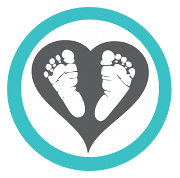 Here is the statement by the AAP (American Academy of Pediatrics)
Here is the statement by the AAP (American Academy of Pediatrics)With the potential instability of some existing shopping cart designs, and because it is difficult for a parent to easily ascertain a cart's safety simply by looking at it, parents should carefully consider the potential for injury before placing a child in a shopping cart, according to the policy. Instead of putting children in shopping carts, parents can try one of the following alternatives:
· Get another adult to come with them to watch the children while shopping.
· Put children in strollers, wagons, or frontpacks instead of in shopping carts.
· Ask older children to walk and praise them for behaving and staying nearby.
· Leave children at home with another adult.
· Shop online if local stores offer shopping on the Internet.If a parent chooses to place a child in a shopping cart, he or she should ensure that the child is properly secured in an effective and age- and size-appropriate belt or harness.
Parents and caregivers should never:
· Leave a child alone in a shopping cart.
· Allow a child to stand-up in a shopping cart.
· Place an infant carrier on top of the shopping cart.
· Allow a child to ride in the basket.
· Allow a child to ride on the outside of a cart.
· Allow an older child to climb on the cart or push the cart with another child inside.
And as for car seats...
Car seats are designed for use in the car, making the ride safer for your baby. But, there are times when the seats are used improperly outside the car, especially on elevated or soft surfaces (tables, grocery carts, beds, etc.)
The center of balance in a grocery cart makes toppling a real risk, especially if you have a toddler along, riding on the side of the cart as well. Your baby will be safest in an infant carrier on you (with face free to the air) or in a low place. A stroller is a better option than a shopping cart. Of course this does raise the question of what to do with the groceries...
STUDY EXAMINES USE OF CAR SEATS OUTSIDE THE CAR A study published online July 5th in the journal Pediatrics examines hazardous use of car seats outside of a car in the US. The study authors note that when used improperly or for unintended purposes, car seats can place children at risk for injury or death. They examined car seat-related injuries to children under one year of age who were treated in emergency departments from 2003 to 2007 (excluding injuries caused by motor vehicle crashes). They found more than 43,500 car seat-related injuries during this time period, with 62.4% of the injuries occurring in infants younger than four months. The most common causes of injury were infants falling from car seats, car seats falling from elevated surfaces and car seats overturning on soft surfaces. The study concludes by stressing the importance of injury-prevention efforts focused on hazardous use of car seats outside of the car, and the need to caution caregivers against placing car seats on elevated or soft surfaces. (click this post title to read the full report)While we can't prevent all accidental injuries, we can make a few modifications that should improve the odds. It is also safest to move your sleeping child into the crib once you arrive because the car seat is not an ideal sleep surface for infants.
According to the American Academy of Pediatrics, your baby should sleep:
- in a bassinet, cradle, or crib that is near her mother's bed.
- on her back, not on her side or stomach.
- on a firm sleep surface, such as a firm crib mattress, which has been covered by a well fitted sheet.
- without any soft objects (pillows and toys) or loose bedding (blankets and sheets) in her bassinet, cradle, or crib.






















No comments:
Post a Comment
This blog only reviews comments before posting to avoid hijacking. We will respond to comments Mon-Thurs but we are closed Fri-Sun and legal holidays.